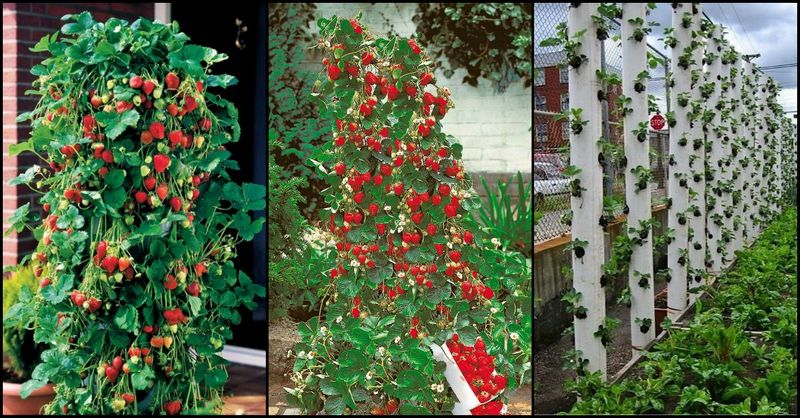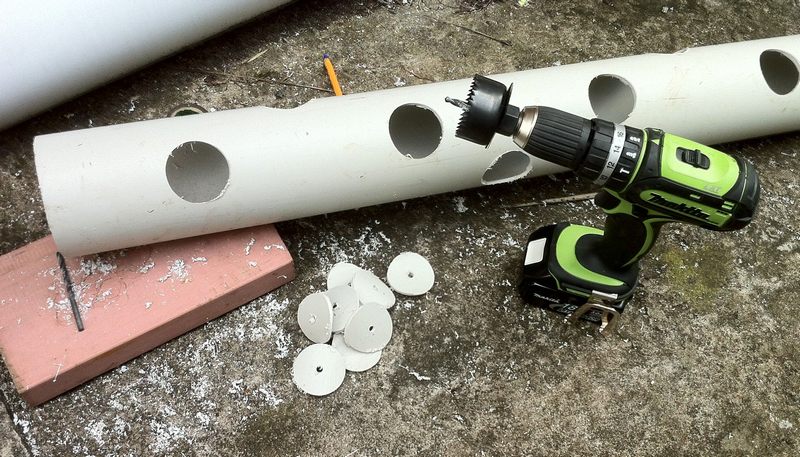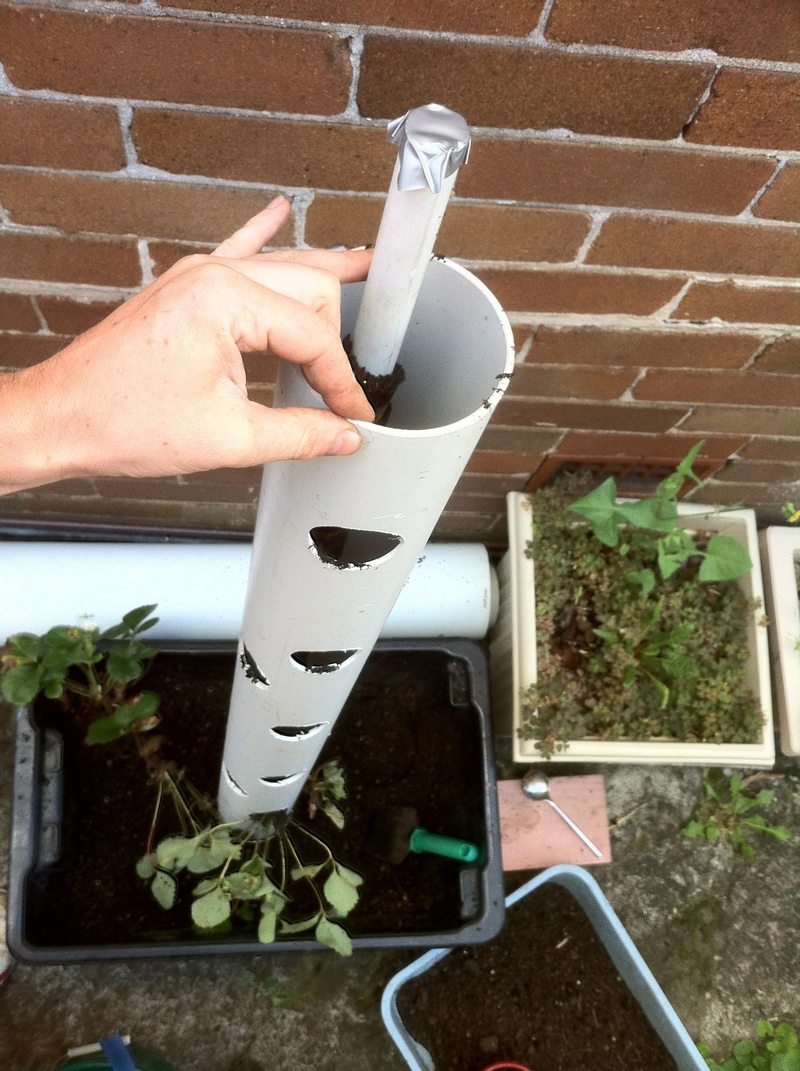Last Updated on March 1, 2024 by teamobn

Vertical planters offer numerous advantages, making them a popular choice for gardeners and homeowners alike. Here are some key benefits:
1. Maximized Space Utilization: One of the primary advantages of vertical planters is their ability to maximize space utilization. By growing plants vertically, you can make efficient use of limited space, whether you have a small balcony, patio, or urban garden. Vertical planters allow you to grow a variety of plants in a compact footprint, making them ideal for urban environments where space is at a premium.
2. Enhanced Aesthetic Appeal: Vertical planters add visual interest and beauty to any indoor or outdoor space. Whether you choose to grow lush greenery, colourful flowers, or fragrant herbs, a vertical planter can transform a dull wall or empty corner into a vibrant living wall. Vertical gardens create a striking focal point and serve as natural works of art that enhance the overall aesthetics of your home or garden.
3. Improved Air Quality: Plants are natural air purifiers, absorbing carbon dioxide and releasing oxygen through photosynthesis. By incorporating a vertical planter into your living space, you can improve indoor air quality and create a healthier environment for yourself and your family. Plants also help filter out pollutants and toxins, contributing to cleaner and fresher indoor air.
4. Increased Biodiversity: Vertical planters provide habitat and food sources for various beneficial insects, birds, and other wildlife. By cultivating a diverse range of plants, you can attract pollinators such as bees and butterflies, which play a crucial role in the pollination of flowers and food crops. Vertical gardens contribute to biodiversity and support local ecosystems, promoting ecological balance and resilience.
5. Accessibility and Convenience: Vertical planters offer easy access to your plants, allowing you to tend to them without bending or stooping. This accessibility is especially beneficial for individuals with mobility issues or limited space for traditional gardening. Vertical gardens can be positioned at a convenient height, making it easier to water, prune, and harvest your plants with minimal effort.
6. Versatility and Flexibility: Vertical planters are incredibly versatile and adaptable to various environments and growing conditions. Whether gardening on a sunny balcony, shady courtyard, or indoor space with limited light, there’s a vertical planter solution to suit your needs. You can customize your vertical garden with diverse plants, containers, and designs to create a personalized oasis that reflects your style and preferences.
7. Reduced Maintenance: Vertical gardens typically require less maintenance than traditional ground-level gardens. Because plants are grown vertically, they are less susceptible to pests, diseases, and weeds. Additionally, vertical planters help conserve water by minimizing evaporation and runoff, resulting in reduced water usage and lower utility bills.
8. Educational and Therapeutic Benefits: Vertical gardening provides educational opportunities for children and adults alike. It offers hands-on learning experiences about plant growth, ecosystems, and environmental stewardship. Gardening also has therapeutic benefits, such as stress reduction, improved mood, and increased relaxation. Tending to a vertical garden can promote mindfulness and connection with nature, fostering a sense of well-being and fulfillment.
How to Make Your Beautiful Vertical Planter
Contents
Materials:
– Any length 100mm-150mm (4″ – 6″) diameter PVC or any other kind of pipe
– Potting mix and compost
– Plants (not large plants or bushes)
– Large pebbles of about the same size for added support/stability
– A drip irrigation pipeline (or you can simply water from the top and it will trickle down) *
Tools:
– A drill and circular drill bit OR
– A jigsaw if you don’t own the above
– A hacksaw (if pipe needs to be cut down)
– Marker pen

Important:
A minimum of 25% of your above ground height needs to be below ground, to ensure stability. e.g. if you want your planter to be a metre high then the overall length of your pipe must be 125cm (or more).
How to:
1. If you are using an off-cut or leftover material from a previous job, then the size and height of your project have already been determined for you.
2. If you are buying the materials you need to decide on the height and width of the pipe. For a 100mm pipe, it is recommended to have only one hole in a horizontal row so the plants have enough room for their roots to grow. For 150mm pipes, you can have up to 3 holes in each horizontal row depending on which plants you choose (three holes for flowers only, the rest either one hole or two).
3. Using a marker pen, mark out the holes you want to cut for your plants using the guidelines above. The size of the hole directly depends on the plant’s type and size.
4. Using the markings, cut the planting holes using either a hand drill with a circular drill bit or a jigsaw.

6. Set up the pipe in a large pot or directly into the soil, using the pebbles for additional stability.

8. Finally, put the compost and soil into your pipe and start planting.
9. Keep the water up to your plants and sit back and reap the rewards.
* Because the planters hold only a limited amount of soil, it is essential you keep the water up to your plants. If you are relying on watering only at the top of the pipe, you’ll find that the plants at the top will get plenty of water but those at the bottom will get a lot less dry. That’s fine if you plant accordingly, but the best solution is to insert a weeper hose into the main pipe. This can be purchased or simply made by using a 1″ conduit drilled with weep holes down its length. Wrap this inner conduit in geo-fabric or weed-cloth to prevent it from getting blocked over time.
Safety Precautions for Vertical Planters
While vertical planters offer numerous benefits, it’s essential to take certain safety precautions to ensure a safe and enjoyable gardening experience. Here are some tips to keep in mind:
1. Choose Sturdy Materials: When constructing or purchasing a vertical planter, opt for sturdy and durable materials that can support the weight of the plants and soil. Ensure that the planter is securely anchored to the wall or structure to prevent tipping or collapsing.
2. Consider Weight Distribution: Be mindful of the weight distribution when designing or installing a vertical planter. Distribute the weight evenly across the planter to avoid putting excessive strain on specific areas or attachment points.
3. Check Structural Integrity: Regularly inspect the structural integrity of your vertical planter, especially if it’s exposed to outdoor elements such as wind, rain, or temperature fluctuations. Look for signs of wear, damage, or deterioration and make any necessary repairs or reinforcements promptly.
4. Avoid Overcrowding: While it’s tempting to fill every available space in your vertical planter with plants, avoid overcrowding to prevent overcrowding. Overcrowding can lead to competition for resources, poor air circulation, and increased susceptibility to pests and diseases. Give your plants plenty of space to grow and thrive by spacing them appropriately and pruning as needed.
5. Monitor Watering Needs: Pay close attention to the watering needs of your vertical garden, as plants may dry out more quickly than those in traditional gardens. Ensure that your vertical planter has adequate drainage to prevent waterlogging and root rot. Water your plants regularly, but avoid overwatering, as excessive moisture can lead to fungal diseases and root problems.
6. Use Caution with Installations: When installing or mounting your vertical planter, use caution and follow manufacturer instructions carefully. Use appropriate tools, hardware, and safety equipment to ensure a secure and stable installation. If you’re unsure about the installation process, seek assistance from a professional or experienced gardener.
7. Keep Children and Pets Safe: If you have children or pets, take precautions to keep them safe around your vertical planter. Place the planter in an area where children and pets cannot easily access it or install a protective barrier to prevent them from knocking it over.
Additionally, avoid using pesticides or chemicals that could be harmful if ingested. Regularly inspect the planter to ensure it remains secure and free from hazards, and educate children and pets about the importance of respecting plants and garden spaces. By prioritizing safety, you can enjoy your vertical planter with peace of mind knowing that everyone in your household is protected from potential risks.
Vertical planters offer an innovative way to grow a variety of plants, maximizing space while adding visual interest to indoor or outdoor areas. When selecting plants for a vertical planter, it’s essential to consider factors such as light exposure, water requirements, and space constraints. Here are some popular plants that thrive in vertical gardening environments:
- Herbs: Herbs are excellent candidates for vertical planters due to their compact size and shallow root systems. Basil, parsley, mint, and thyme are popular choices that provide fresh ingredients for cooking while adding fragrance and beauty to your space.
- Leafy Greens: Leafy greens such as lettuce, spinach, kale, and arugula are well-suited for vertical gardening. These fast-growing plants tolerate partial shade and can be harvested continuously for salads, sandwiches, and smoothies.
- Strawberries: Strawberries are ideal for vertical planters due to their trailing habit and compact growth. Planting strawberries in a vertical arrangement allows for easy access to ripe berries while maximizing space and preventing fruit rot.
- Succulents: Succulents are drought-tolerant plants that thrive in vertical gardens, adding texture and visual interest with their unique shapes and colors. Echeveria, sedum, and sempervivum are popular choices for vertical planters and require minimal maintenance.
- Flowering Annuals: Annual flowers like petunias, geraniums, and impatiens are perfect for adding a pop of color to vertical gardens. These plants bloom profusely throughout the growing season, attracting pollinators and brightening up any space.
- Ferns: Ferns are prized for their lush foliage and ability to thrive in low-light conditions, making them excellent choices for vertical planters in shaded areas. Boston ferns, maidenhair ferns, and bird’s nest ferns add a touch of elegance and beauty to vertical gardens.
- Vining Plants: Vining plants such as ivy, pothos, and philodendron are well-suited for vertical gardening, as they naturally trail and climb. These plants add vertical interest and can be trained to grow along trellises or supports, creating a lush and verdant backdrop.
- Aromatic Plants: Aromatic plants like lavender, rosemary, and lemon balm not only add fragrance to vertical gardens but also repel pests and attract beneficial insects. These plants thrive in sunny locations and provide sensory pleasure with their aromatic leaves and flowers.
- Vegetables: Some vegetables can be grown vertically in planters, allowing you to maximize space and harvest fresh produce. Tomatoes, cucumbers, peppers, and beans are examples of vegetables that can be trained to grow vertically, provided they receive adequate support and sunlight.
When selecting plants for your vertical planter, consider factors such as light exposure, water requirements, and space constraints to ensure successful growth and a thriving garden display. Experiment with different plant combinations and arrangements to create a personalized vertical garden that reflects your style and preferences. With careful planning and maintenance, you can enjoy a lush and vibrant vertical garden that enhances your indoor or outdoor space.
The Wrap Up
Creating a stunning vertical planter in nine steps is not just a gardening project; it’s an opportunity to transform your space, infuse it with greenery, and elevate its aesthetic appeal. Through careful planning, execution, and maintenance, you can enjoy the benefits of a lush vertical garden that enhances your environment and brings joy to your daily life.
First and foremost, a vertical planter offers versatility, allowing you to maximize space and cultivate plants even in limited areas. Whether you have a small balcony, a narrow patio, or a compact backyard, vertical gardening enables you to make the most of vertical surfaces, adding layers of greenery and texture to your outdoor oasis.
Moreover, a vertical planter fosters creativity and self-expression. With endless possibilities for plant selection, arrangement, and design, you can customize your vertical garden to reflect your personal style and preferences. Whether you prefer vibrant blooms cascading down the wall or a mix of herbs and succulents adorning your vertical planter, the choice is yours.
In addition to its decorative appeal, a vertical planter offers practical benefits as well. By incorporating edible plants like herbs, vegetables, and fruits into your vertical garden, you can cultivate fresh produce right at your fingertips, promoting sustainability and self-sufficiency. Imagine plucking ripe tomatoes, snipping fragrant basil, or harvesting crisp lettuce from your vertical planter to elevate your culinary creations.
Furthermore, a vertical planter contributes to environmental sustainability by promoting biodiversity and mitigating urban heat island effects. By introducing greenery into urban spaces, vertical gardens help purify the air, absorb carbon dioxide, and provide habitat for beneficial insects and birds, fostering ecological balance and resilience.
Additionally, a well-designed vertical planter can enhance the aesthetic appeal of your home or outdoor space, serving as a focal point or statement piece that draws the eye and sparks conversation. Whether you opt for a sleek and modern design or a rustic and whimsical arrangement, a vertical planter adds visual interest and charm to any setting.
Finally, maintaining a vertical planter offers therapeutic benefits, providing an opportunity to connect with nature, reduce stress, and nurture your well-being. Whether you’re tending to your plants, watering them, or simply admiring their beauty, spending time in your vertical garden can be a source of relaxation and rejuvenation in today’s fast-paced world.
In conclusion, creating a stunning vertical planter in nine steps is a rewarding endeavour that offers numerous benefits for both you and the environment. From maximizing space and fostering creativity to promoting sustainability and enhancing well-being, a vertical planter is more than just a garden—it’s a living work of art that enriches your life in countless ways.
Frequently Asked Questions
1. Is it difficult to build a vertical planter?
Building a vertical planter can be a fun and rewarding DIY project, suitable for gardeners of all skill levels. With proper planning and execution, you can create a stunning vertical garden that transforms your space.
2. What materials do you need to build a vertical planter?
The materials needed to build a vertical planter may vary depending on your design preferences and the size of your project. However, common materials include wood, metal, PVC pipes, fabric pockets, and sturdy hooks or brackets for mounting.
3. Can you grow edible plants in a vertical planter?
Yes, you can grow a variety of edible plants in a vertical planter, including herbs, vegetables, fruits, and even edible flowers. Just be sure to select plants that are well-suited to vertical gardening conditions and provide adequate care to ensure their health and productivity.
4. How do you maintain a vertical planter?
Maintaining a vertical planter involves regular watering, pruning, fertilizing, and monitoring for pests and diseases. Additionally, you’ll need to periodically check the structural integrity of your planter and make any necessary repairs or adjustments to ensure its stability and longevity.








